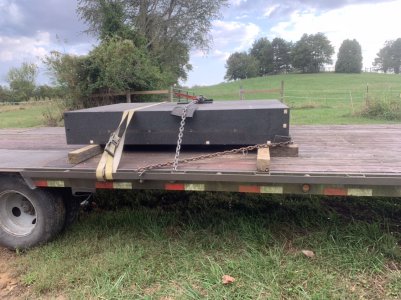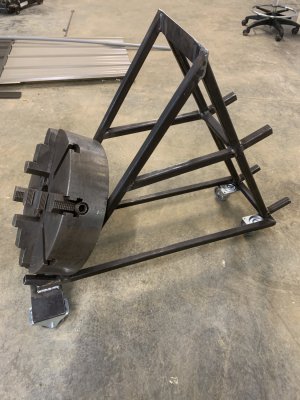Should have known that you had already thought of that. Couldn't see it in the original image until you provided the close up. Nicely done. The airplane tug format will allow you to steer that very easily. Although you may want to rig it with a connection to your three point or a ball if you get a forklift.Round black nylon puck is a little easier to see here. Rings around the outside of the nylon are from where the drill bit grabbed and it spun in the lathe chuck. 1” diameter center stub shaft from the leg through the caster.
View attachment 409765
My biggest concern with the three legged stand is the granite tipping. Worst case is that I have a little more than 13” from the center mass of the table to the perimeter of the support triangle in the direction of the front corners of the table. The corners are a fraction over 50” from center. So for a 7000lb slab it would take a bit over 2400lbs at the corner to tip it. That is safe enough for human weight ranges to not tip it, assuming I did not mess up my geometry and physics.
I just remembered seeing the granite slab that you purchased way back when. That is a huge slab. Would be a great item to have in the shop.



